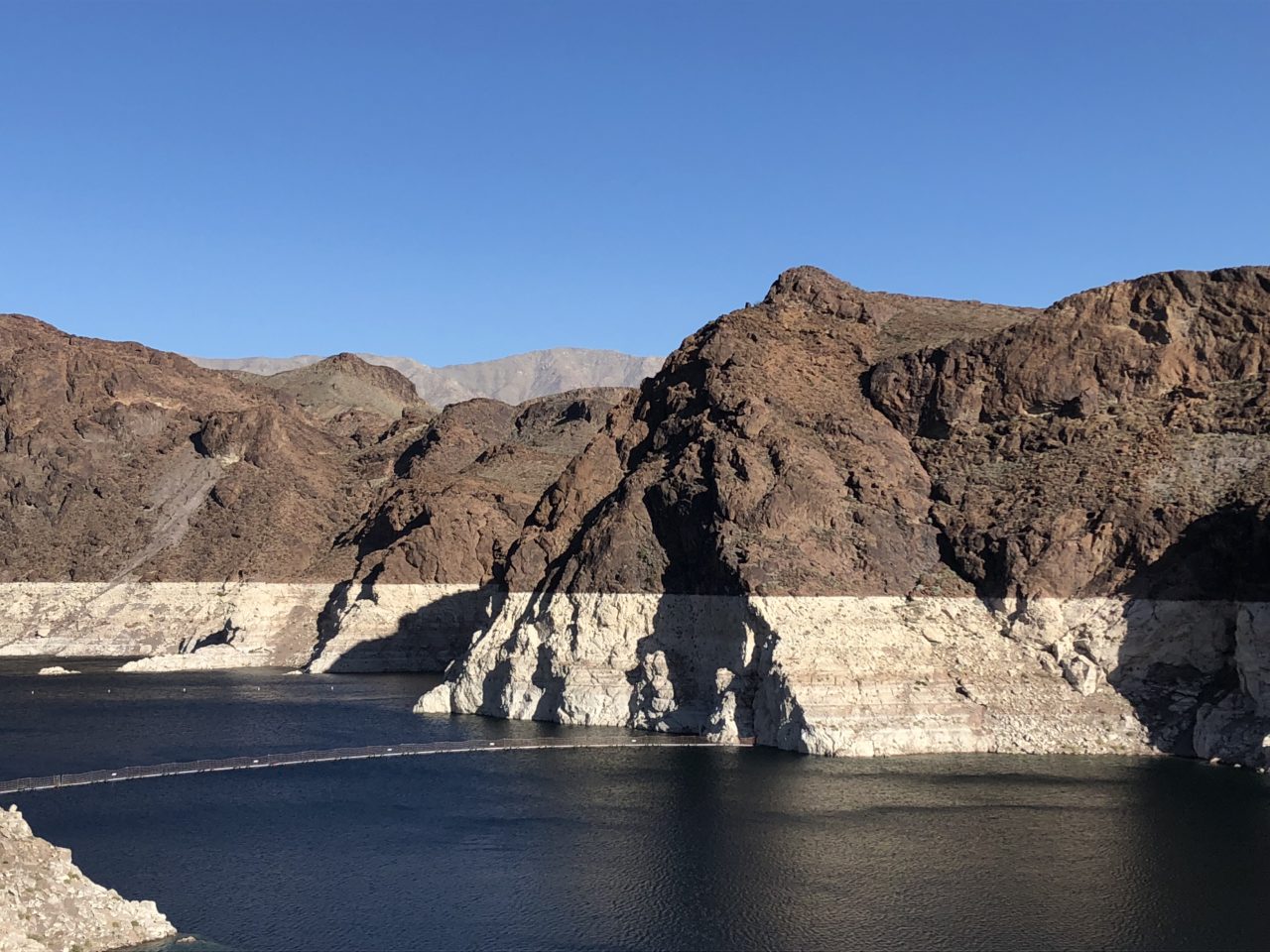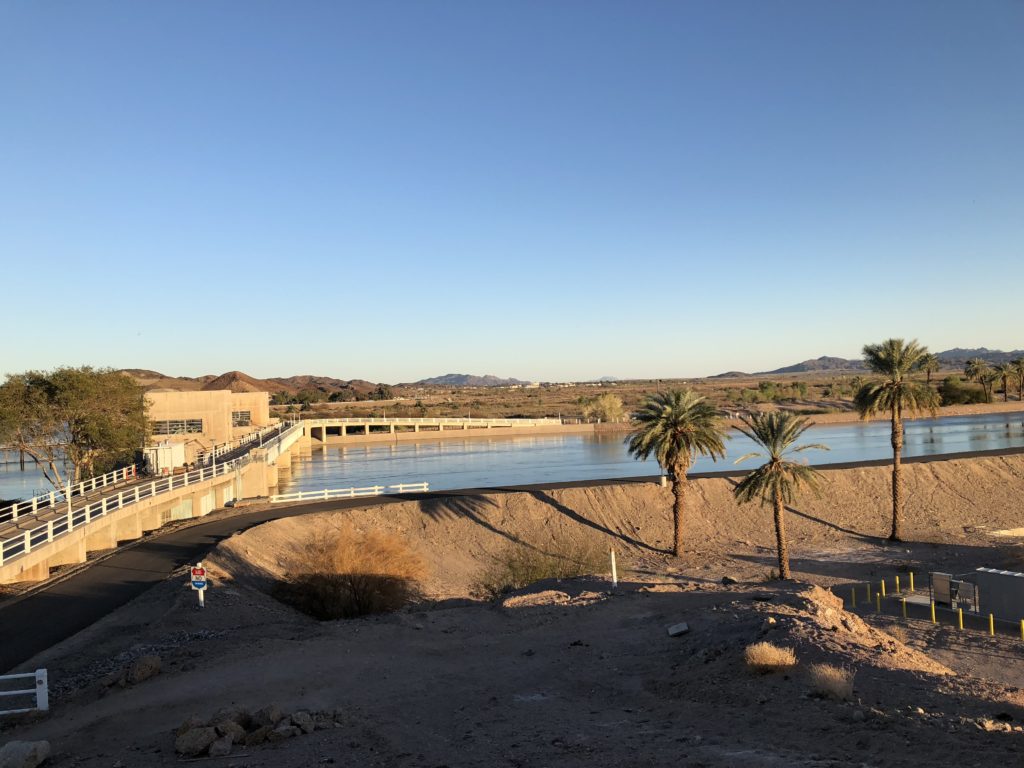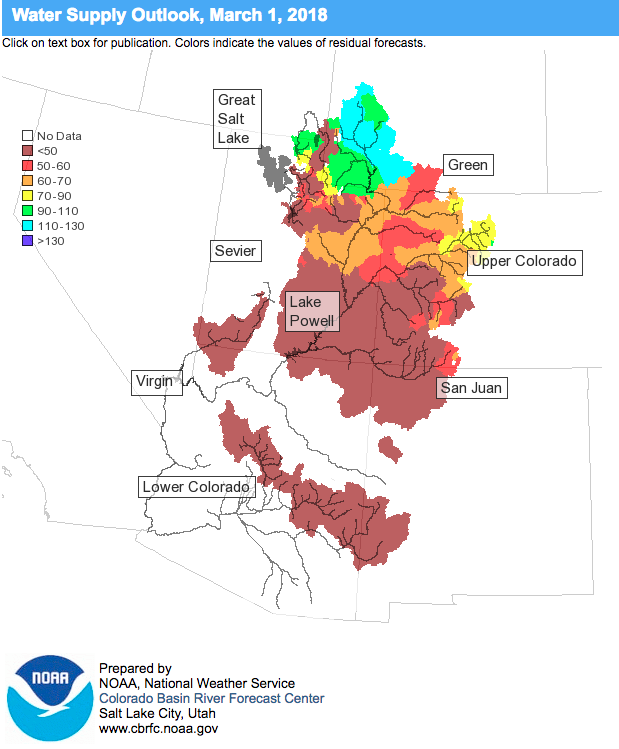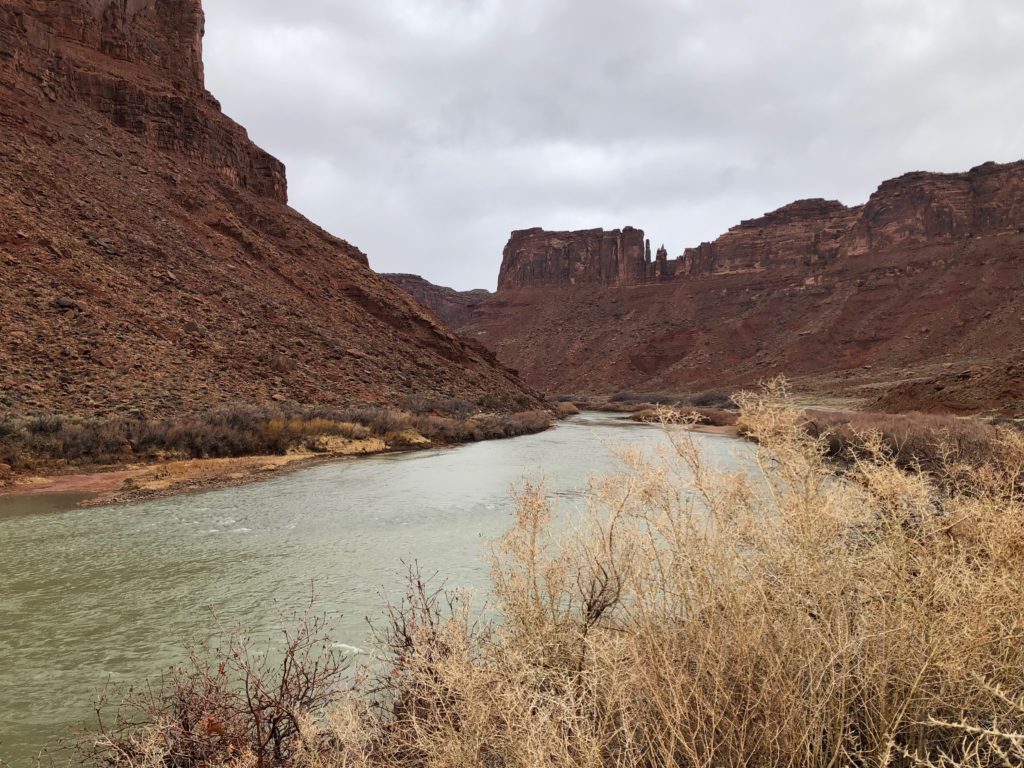Infighting delays Lake Mead drought plan as water 'bankers' protect control

Lake Mead is unsustainable. The Southwest U.S. needs a plan. On this, everyone agrees. But a fix is hard because water agencies exist to protect their own interests — and while the depth of the reservoir is a piece of that puzzle, so is making sure they get their share of the water. That’s a difficult balance to strike, and it’s led to political tension in Arizona, California and potentially in the U.S. Senate.
Nevada is ready to sign off on a drought plan for Lake Mead.
But nothing is that easy on the Colorado River.
Miles away from the reservoir that provides Southern Nevada with 90 percent of its water, negotiations over a Drought Contingency Plan continue to become more complicated.
The updated drought plan builds on 2007 rules, and it would require Arizona, California and Nevada to cut their Lake Mead allocations during times of shortage. The cuts are seen as a response to drought, a critical and proactive tool to keep Lake Mead from dropping to levels that would cause even greater shock to the Southwest cities, tribes and farmers who depend on it.
For nearly two years, Nevada has been ready to move forward with the plan, but it is waiting on Arizona and California, which are sorting through internal issues: lawsuits, contract negotiations and political power struggles. Even if the states get on board, the plan needs federal legislation.
“Nevada’s role right now is to encourage California and Arizona to conclude their internal processes,” John Entsminger, general manager of the Southern Nevada Water Authority, said this week. “We view [the plan] as critical to proactively manage the lower Colorado River.”
The states had been aiming to wrap up negotiations by August, but it’s looking more difficult.
“I would characterize it as possible but unlikely at this juncture,” Entsminger said.
What’s the issue with Lake Mead?
Think of Lake Mead as a bank.
That is how most water agencies across Arizona, California and Nevada have come to view the country’s largest man-made reservoir, the chokepoint for water deliveries to millions of people across the Southwest U.S. and Mexico. Since 2007, water agencies have been allowed to store extra water in a virtual Lake Mead “bank account” to avoid triggering cuts during a shortage.
Their currency being water, the account-holders are prone to bicker. But if they are in agreement on one thing, it’s that the water bank underpinning the Southwest economy is not sustainable.
- The bank runs at a deficit. More water leaves the lake than enters the lake. Stated another way, the bank has promised to hand out more water than it has each year.
- Then there is the issue of changing weather patterns. Persistent drought has reduced Colorado River snowpack, which in turn reduces water in Lake Mead. The lake fills when melted snow flows from the Rocky Mountains down to the reservoir. Stream flow this year is expected to be well below average, as it has been for much of the last decade.
- The dry weather in the region could hit Lake Mead twice. The bank at Lake Mead is connected to a whole series of other reservoirs (or banks) spread across the Colorado River Basin. Because of an operating agreement with Lake Powell (the other big bank), water that is scheduled to go to Lake Mead can be curtailed if there is low runoff into Lake Powell.
Because the Southwest’s sprawling cities and farms rely on this supply, all the water agencies have a stake in ensuring that Lake Mead does not trickle to zero. For several years, they have been working on a Drought Contingency Plan that would require the states to take cuts in their deliveries from Lake Mead in times of shortage (Bureau of Reclamation, the federal agency that manages the bank, declares a shortage at a lake elevation of 1,075 feet, or about 35 percent of capacity).
A shortage could happen as early as 2019, while the drought plan seems farther off than it was even a few months ago. No one wants to see Lake Mead dry up. But no one wants to give up too much.
“Without some sort of remedy, Lake Mead will continue to be a draw on the system,” said Don Ostler, executive director of the Upper Colorado River Commission. “At some point in time, that may affect the Upper Basin’s ability to continue the [operating] guidelines in the current form.”
Three big challenges to the drought plan
Although the three states have agreed on a framework for the drought plan, there are a number of internal arguments that need to be addressed before a drought plan moves forward. The issues are different within each state but most of them come down to who gets to control Colorado River water.
1) A lawsuit in the Imperial Irrigation District
Tucked away at the Southern border of California, the Imperial Irrigation District (IID) is the single largest user of Colorado River water in the Lower Basin. It’s a key player when it comes to negotiating a Lake Mead drought plan. Under the guidelines, it would help California meet its requirements to keep a certain amount of water in Mead during shortages.
But after a little-discussed court ruling in January, that all became more complicated. An appellate court directed IID to stop a program that helped it apportion and cap water use. As a result, the water agency ended the program in February and now has less control over how water is used. The move also left the district with less control over how much water it can leave in Lake Mead.
“We are in a kind of limbo here,” said Kevin Kelley, the IID’s general manager. “We can’t commit water that we’re unable to measure within our own system.” The agency is appealing, but if the ruling stands, Kelley said it adds “another layer of uncertainty.”

If IID can’t come to the table, it would place more of the burden to cut back on the Metropolitan Water District (MWD), the wholesale provider for cities across Southern California.
So far, the two agencies have been working together. They are still negotiating an intrastate agreement that would allow IID to keep more water in its Lake Mead bank account. Their ask would leave the agricultural district with more flexibility but less “free” water going to Southern California cities. And it remains a lingering issue in the contract negotiations with MWD.
“That’s a deal point that we've still got work to do on,” Kelley said.
Jeffrey Kightlinger, MWD’s general manager, said there is a “good framework” for a deal.
“We haven’t yet sat down and finished it,” Kightlinger said in an interview, “probably because it looks as if there are some [issues] in Arizona. And we haven’t felt the urgency to bring this together because it doesn’t look like the rest of the package is moving at the moment.”
2) A bitter skirmish over Arizona’s water
Everyone is waiting on Arizona.
Under the current Drought Contingency Plan, most of the burden would fall on Arizona to take cuts in a shortage. Without Arizona, the plan, which requires legislative approval, would fall apart. For months, water users from Colorado to Nevada have watched Arizona to see if the state legislature would back a plan.
So far, the legislature has not taken up the plan.
At issue are philosophical disagreements over how to deal with shortages in Lake Mead. That disagreement has sparked a fierce power struggle between the state water agency and the Central Arizona Project (CAP), which conveys Lake Mead water to cities like Phoenix and Tucson. The state water agency — the Arizona Department of Water Resources — wants to control whether and how unused CAP water is stored in the lake. CAP argues that it should have control over how that water is used.
These two positions stem from a divide over how to address cutbacks. State officials believe CAP users should defer deliveries to keep more water in Lake Mead. The hope is that this would prevent shortages or at least keep Lake Mead at higher elevations and stave off more devastating shortages.
CAP General Manager Ted Cooke said he believes that approach is counterproductive. He said cuts are inevitable. Instead of conserving the water in Lake Mead, his view is that it would be better to keep the Colorado River water downstream and use it to mitigate cuts when they come.
This thinking is part of an elaborate dance with the Upper Basin states. In normal years, Lake Mead receives 8.2 million acre-feet of water from Lake Powell. But when Lake Mead’s elevation is low, the federal government sends 9 million acre-feet of water. Cooke said he is concerned that if Lake Mead elevations increase too much, Lake Powell will stop sending the bonus water.
“Use the water that you would have otherwise conserved [in Lake Mead] to allow the people who are not going to get the water because of the shortage to have some,” Cooke told reporters at a fellowship with the Institute for Journalism & Natural Resources. “It will come to an end at some point. There will be a shortage unless the drought somehow miraculously ends.”

Other water managers believe the approach could backfire.
Last year, when CAP floated this plan, the general manager of the Colorado River District, which oversees water on Colorado’s Western Slope, said in a letter that this was “gaming” the system. But given how inflows to Lake Mead work, Eric Kuhn, the district’s former director, wrote that “if 2018 and beyond are dry, the impact may be to accelerate when Powell releases drop to 7.48 million acre-feet.” Arizona state officials agreed with that analysis and opposed CAP’s plan.
“We independently did the analysis that [he] was probably referring to and reached the same conclusion,” said Tom Buschatzke, director of the Arizona Department of Water Resources.
3) Eight U.S. senators carry leverage
Enter the Upper Colorado River Basin.
There is a growing consensus among most Colorado River users that the Lower Basin Drought Contingency Plan will require federal legislation. But federal legislation could introduce another layer of political complexity. It gives the Upper Basin states of Colorado, New Mexico, Utah and Wyoming some leverage to amend the drought plan or add to it through their U.S. senators.
The Upper Basin states have also been working on a drought plan. As part of the process, there have been discussions about creating storage, a place to “bank” conserved water for drought years. No formal proposals have been made, but water users are debating whether to add it to the drought plan.
“The Upper Basin states haven’t decided for sure whether they are going to request that,” said Ostler, who leads the Upper Colorado River Commission to coordinate on basin-wide issues.

A storage project for the Upper Basin would be complicated. Lake Powell is located downstream from most users and accounting would be difficult.
“It’s a difficult nut to crack,” Ostler added.
The Lower Basin states would likely have some issues with how a storage plan in the Upper Basin would work. As is, the Upper Basin states have concerns with the Lower Basin’s plans. The drought plan, as currently drafted, would allow Lower Basin water users to take “banked” water from their Lake Mead accounts during times of shortage, leading to lower elevations in dry years. This, in turn, could affect how much water is delivered from Lake Powell.
“It is a concern to us,” Ostler said.
But he stressed that the two basins are working constructively.
“We’re deliberately trying to look at this whole proposal as a package,” Ostler said. “There may be some things we don’t like. But they might be outweighed by some stuff that we do like.”
Is there hope? Yes.
Everyone wants a Drought Contingency Plan. The issue is getting there.
“The sooner we get this completed, the better for everyone,” Kightlinger said.
Several experts and advocates across both basins believe this year’s hydrology — a lackluster water supply outlook — will place more public pressure on water managers to take some action. In addition to the public pressure, water managers will want new rules in place for a shortage.
As John Fleck, director of the water resources program at the University of New Mexico, noted in a blog post in December, some water users, like MWD in Southern California, left additional water in Lake Mead in 2017 as though the drought plan had been implemented. “This is a strong vote of confidence that [the drought plan], while not done, soon will be,” Fleck wrote in the post.
Another reason Colorado River users want to get the drought plan finished as soon as possible is because in 2020, they are required to enter into another round of negotiations over an equally complicated seven-state agreement.
“The longer this goes on, the possibility that these negotiations bleed into the 2020 date becomes more of a factor,” said Entsminger, who leads SNWA and is worried that could introduce more side issues. Although, in the end, he added: “A lot of these negotiations are driven literally by the weather.”
